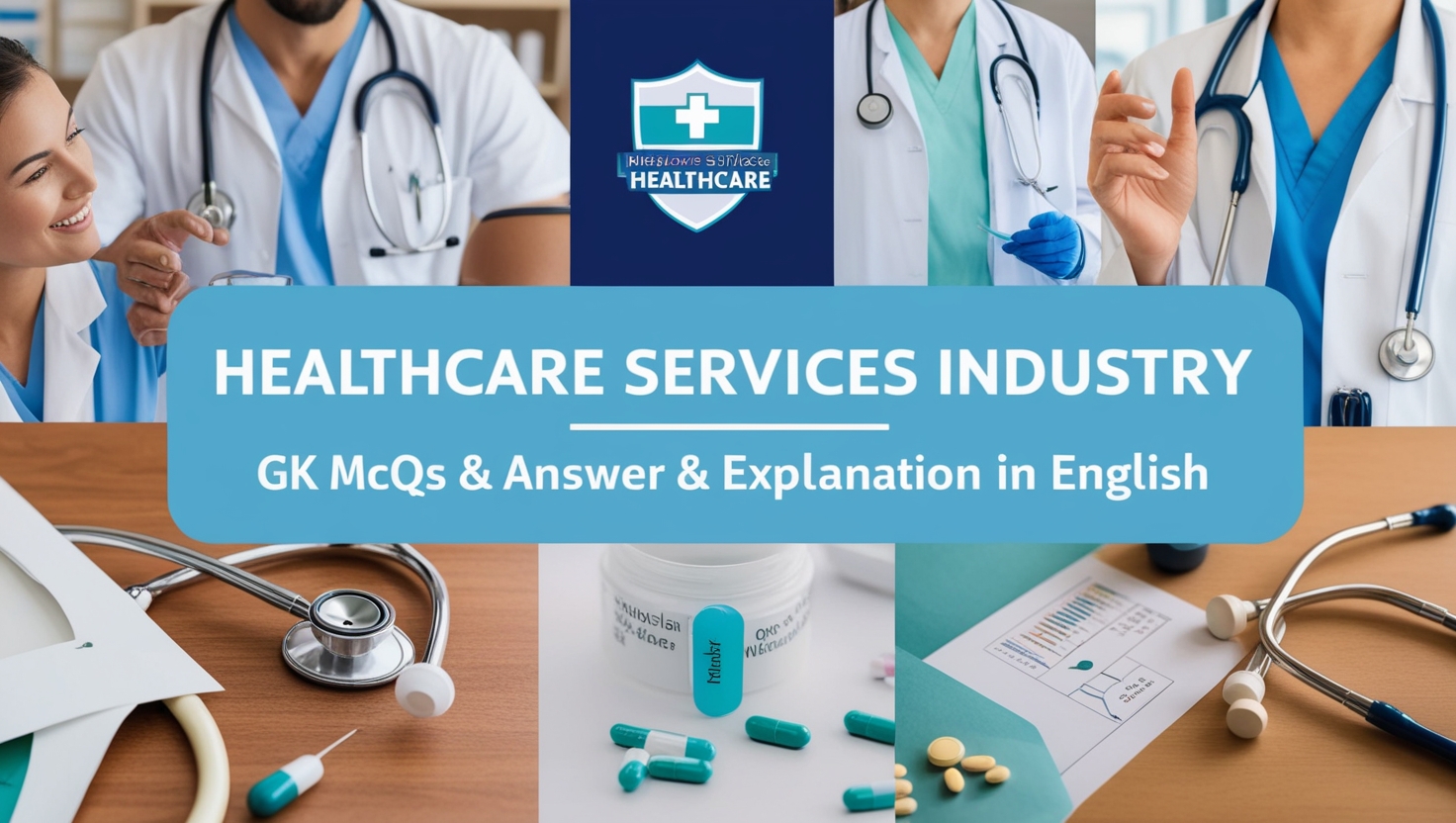
The article Healthcare Services Industry GK MCQs With Answer & Explanation in English is essential for anyone looking to expand their knowledge in this field. This article provides a well-curated selection of MCQs covering key concepts and facts about healthcare services, all accompanied by clear answers and explanations.
Ideal for competitive exam preparation, this guide offers valuable insights into the industry’s structure, trends, and impact.
1. Which hospital was the first to be opened in India?
- Kolkata hospital
- Madras general hospital
- King George Hospital
- None of the above
Show Answer
Answer: Madras general hospital
Established in 1664, the Madras General Hospital in Chennai holds the distinction of being the first hospital inaugurated in India. Initially founded by the British East India Company, the hospital played a pioneering role in providing healthcare services during a time when organized medical facilities were relatively scarce. Over the centuries, the hospital has undergone transformations and expansions, evolving to meet the changing healthcare needs of the region. As a historical landmark, the Madras General Hospital stands as a testament to the early efforts in institutionalizing healthcare in India.
2. When was the first National Health Policy of India created?
- 1983
- 1989
- 1993
- 1990
Show Answer
Answer: 1983
The first National Health Policy (NHP) in India was launched in 1983, with a focus on establishing a system with primary-care facilities and a referral system.
3. In which year was the National Rural Health Mission (NRHM) launched?
- 2005
- 2003
- 2002
- 2000
Show Answer
Answer: 2005
The National Rural Health Mission (NRHM) was launched in 2005 to address the health needs of under-served rural areas.
4. In which year was the Integrated Child Development Scheme launched?
- 1990
- 1980
- 1975
- 1985
Show Answer
Answer: 1975
The Integrated Child Development Scheme was launched in 1975 with the main purpose of improving nutrition and health status in children.
5. In which year was the Indian Medical Central Council Act passed?
- 1970
- 1960
- 1975
- None of the above
Show Answer
Answer: 1970
The Indian Medical Central Council Act was passed in 1970 to standardise Ayurvedic teaching institutions, their curriculum, and their diplomas.
6. In which year was the first AIIMS established in India?
- 1950
- 1960
- 1956
- 1961
Show Answer
Answer: 1956
The first AIIMS was established in 1956 in New Delhi. AIIMS institutes are declared institutions of national importance by the Act of Parliament.
7. Which among the following comes under the National Ayush Mission (NAM)?
1. AYUSH Services
2. AYUSH Educational Institution
3. Quality Control of AYUSH Drugs.
Choose the right option
- 1 and 3 only
- 1 and 2 only
- 2 and 3 only
- 1, 2, and 3
Show Answer
Answer: 1, 2, and 3
National AYUSH Mission (NAM) includes AYUSH Services, AYUSH Educational Institution, and Quality Control of AYUSH Drugs.
8. In which year was the Indian Medical Association founded?
- 1930
- 1928
- 1925
- 1927
Show Answer
Answer: 1928
Founded in 1928 during the 5th All India Medical Conference in Calcutta, the Indian Medical Association (IMA) has been a pivotal force in uniting physicians and upholding ethical standards in healthcare. Representing medical professionals nationwide, the IMA advocates for doctors’ rights, addresses healthcare challenges, and contributes to medical education and research. Its establishment marked a crucial milestone in fostering professional unity and addressing evolving needs within the Indian medical community.
9. Where is the headquarters of the Indian Medical Association located?
- Kolkata
- Delhi
- Chennai
- Hyderabad
Show Answer
Answer: Delhi
The headquarters of the Indian Medical Association (IMA) is located in Delhi. It is a voluntary organisation representing doctors and works for the well-being of doctors and the community.
10. What is the maximum coverage per family provided under the PM-Jan Arogya Yojna?
- 3 lakhs
- 5 lakhs
- 2 lakhs
- 1 lakh
Show Answer
Answer: 5 lakhs
Under the PM Jan Arogya Yojna, up to 5 lakhs is provided per family per year for medical treatment in empaneled hospitals, both public and private.







